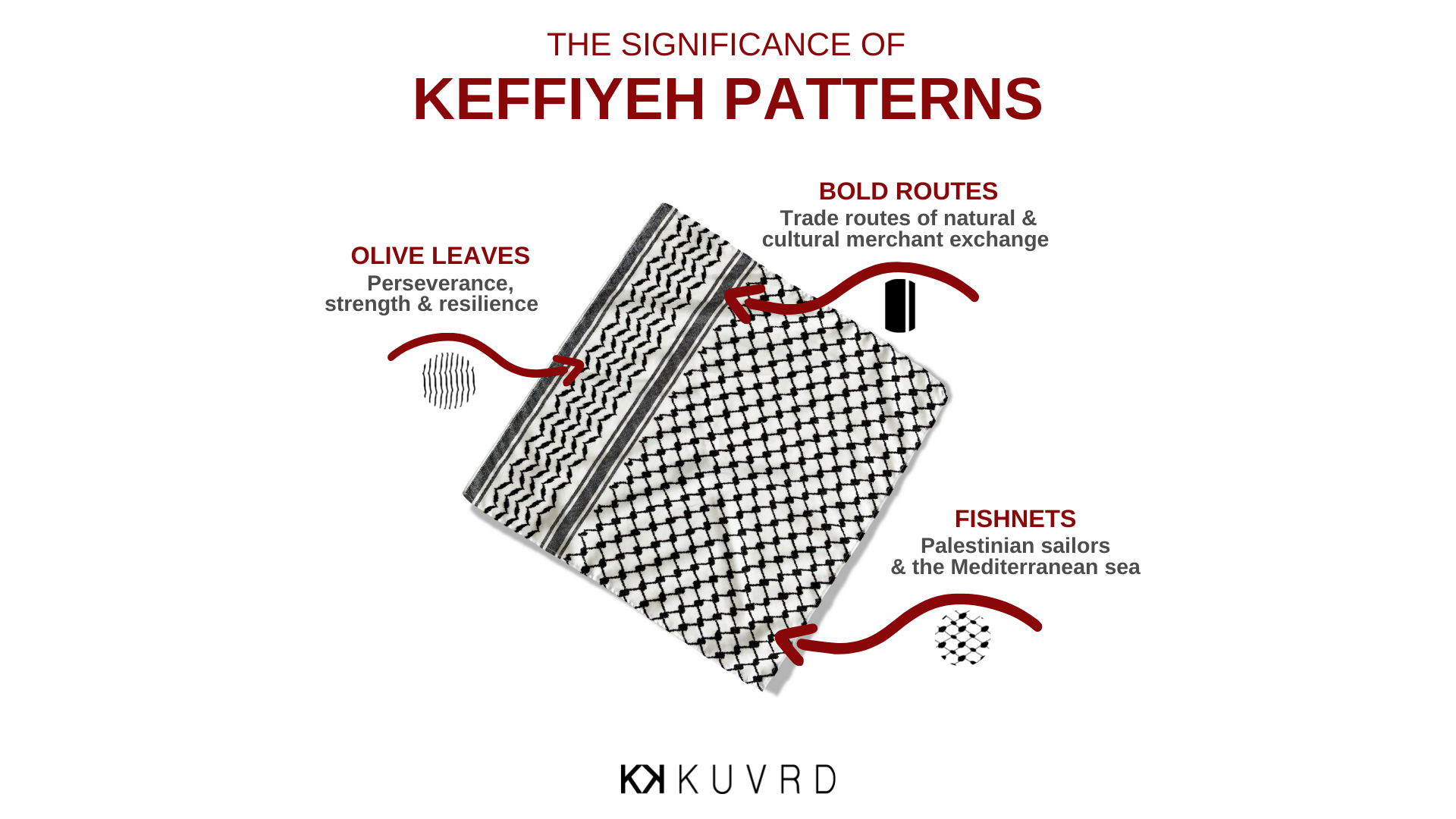History
The keffiyeh, also known as a “kufiya”, “shemagh” or “hattah”, is a square-shaped cotton scarf. However, we all know it is much more than that. The keffiyeh has a long and complex history. Its roots date back to Mesopotamia in 3100 BC where it was worn by the Babylonians and Sumerians! The actual word ‘keffiyeh’ has its origins in the ‘Kufa’ area of Iraq and means “from the city of Kufa''. The scarf, which is usually made from cotton, was an essential piece of clothing for the Bedouins of the desert and Fellahi people, who used it as protection from heat and sand storms. It now goes by many names and can be found in numerous Arab countries such as Palestine, Jordan, Saudi Arabia, United Arab Emirates and Iraq.
 Left: Two Bedouins on the road linking Jerusalem to Bethlehem IN 1964 (Photo by Keystone-France/Getty Images) Right: unidentified Bedouin coffee grinder with mortar and pestle (Photo courtesy of JHARNA BOSE BHATTACHARYA)
Left: Two Bedouins on the road linking Jerusalem to Bethlehem IN 1964 (Photo by Keystone-France/Getty Images) Right: unidentified Bedouin coffee grinder with mortar and pestle (Photo courtesy of JHARNA BOSE BHATTACHARYA)
Palestinian Symbol
Keffiyeh colours, styles and symbolic meaning depend on the country, as red and white is usually associated with Jordan whereas in Palestine, a black and white scarf is mainly worn for the purpose of resistance and solidarity. This became popular in the 1900s, as Palestinian rebels would wear the keffiyeh in order to hide their identity and avoid being arrested. It was also strongly solidified by Yasser Arafat, the leader of Palestine Liberation Organization, as he would almost always be wearing the scarf on his head whilst fighting against the occupation.
 Palestine Liberation Organization leader Yasir Arafat attends a summit conference, Rabat, 1974. (Photo by Hulton-Deutsch/Getty Images)
Palestine Liberation Organization leader Yasir Arafat attends a summit conference, Rabat, 1974. (Photo by Hulton-Deutsch/Getty Images)Pattern Meanings
On our classic Palestinian keffiyeh, there are three main patterns featured, including fishnets, bold routes and olive leaves. The most famous fishnet pattern, which slightly resembles the houndstooth pattern, represents Palestinian sailors and the Mediterranean sea. Fishing was a huge aspect of Palestinian life, especially in Jaffa and Haifa. Secondly, the bold routes and lines featured symbolized trade routes of natural & cultural merchant exchange. Lastly, the wavy olive leaves represent perseverance, strength & resilience. Olive trees are a huge symbol of Palestine as well as Palestinian struggle, as it showcases the attachment to the land even as many olive farmers lose their land and beloved olive trees.

Cultural Appropriation
An unfortunate aspect of our world today is cultural appropriation, which the keffiyeh has also been a victim of. It has been seen a handful of times where big corporations sell pieces featuring the keffiyeh print while completely disregarding its significance and relation to the Palestinian struggle. An example of this is British retailer Topshop, that put out a romper featuring the keffiyeh print but only labelled it as a “scarf playsuit”. Similarly, a Danish brand called Cecilie Copenhagen released a collection featuring the keffiyeh print as an “aesthetic feature” and capitalized off it while ignoring the heavy political significance of it. Lastly, fast fashion retailer Urban Outfitters released an inauthentic keffiyeh and labelled it an “anti-war woven scarf”. These incidents further highlight the importance of purchasing only authentic keffiyeh scarves from Palestinian or Arab-owned businesses.
 Left to right: Topshop, Cecilie Copenhagen, Urban Outfitters.
Left to right: Topshop, Cecilie Copenhagen, Urban Outfitters. To shop our palestinian keffiyeh scarves, click here.



























